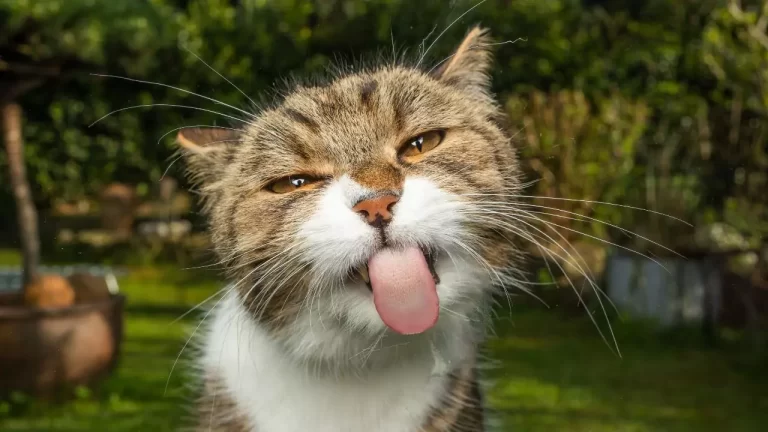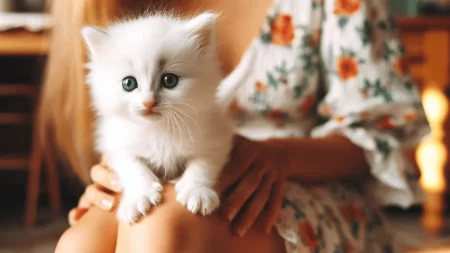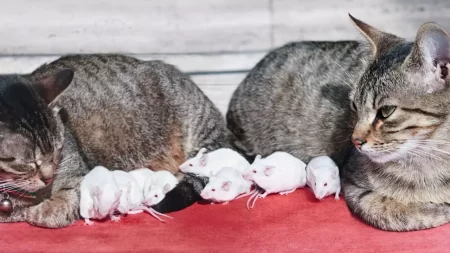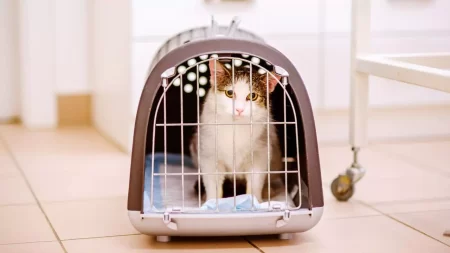Cats are often misunderstood and labeled as “retarded” by some people who do not appreciate their unique and complex behavior.
However, cats are not retarded at all; they are intelligent, adaptable, and fascinating animals that have evolved to survive in various environments.
In this article, we will explore some of the reasons why cats behave the way they do, and how we can promote a better understanding and appreciation of these amazing creatures.
Understanding Cat Behavior
Cats have a rich and diverse behavioral repertoire that reflects their natural history and evolution. Cats are descended from wild felids that lived in harsh and unpredictable conditions, where they had to hunt, defend, and compete for resources. These ancestral influences have shaped some of the unique instincts and behaviors that cats display today.
Unique instincts and behaviors
Some of the common behaviors that cats exhibit are:
- Hunting and playing: Cats are natural predators that have a strong instinct to hunt and chase prey. They also enjoy playing with toys, objects, or other animals that stimulate their hunting drive. Playing helps cats practice their skills, release energy, and have fun.
- Scratching and marking: Cats use their claws to scratch surfaces for various reasons, such as stretching, grooming, sharpening their nails, or marking their territory. Cats have scent glands on their paws that leave behind their signature smell when they scratch. Scratching also creates visible marks that signal to other cats that the area is occupied.
- Grooming and licking: Cats spend a lot of time grooming themselves and others with their tongues. Grooming helps cats keep their fur clean, healthy, and free of parasites. It also helps them regulate their body temperature and cope with stress. Licking is also a way of showing affection and bonding with other cats or humans.
- Kneading and purring: Cats often knead soft surfaces with their front paws, such as blankets, pillows, or human laps. This behavior originates from kittenhood when kittens knead their mother’s nipples to stimulate milk flow. Kneading is comforting and soothing for cats, and it is often accompanied by purring. Purring is a low-frequency sound that cats make when they are happy, relaxed, or in need of comfort.
Sensory abilities
Cats have remarkable sensory abilities that help them navigate and interact with their environment. Some of the sensory abilities that cats possess are:
- Vision: Cats have excellent night vision that allows them to see in dim light. They also have a wider field of view than humans, which helps them detect movement and potential threats. However, cats have poor color vision and cannot distinguish between shades of red and green.
- Hearing: Cats have a keen sense of hearing that enables them to hear sounds that are too high-pitched or too low-pitched for humans to hear. They can also pinpoint the location and direction of sounds with great accuracy. Cats use their ears to communicate their mood and intentions by rotating or flattening them.
- Smell: Cats have a powerful sense of smell that surpasses that of humans. They use their noses to gather information about food, prey, mates, enemies, and territory. They also have a special organ called the vomeronasal organ (VNO) that allows them to detect pheromones, which are chemical signals that convey social and reproductive messages.
- Taste: Cats have fewer taste buds than humans, but they have a more refined sense of taste for certain flavors. Cats prefer foods that are high in protein and fat and avoid foods that are bitter or sour. They also have a preference for water that is fresh and clean.
- Touch: Cats have a highly developed sense of touch that covers their entire body. They have whiskers on their face, legs, and tail that act as sensors for detecting changes in air pressure, wind direction, temperature, and texture. They also have nerve endings on their paws that help them feel vibrations and textures.
Independent nature
Cats are often perceived as aloof, indifferent, or selfish by some people who expect them to behave like dogs or humans. However, cats are not less social or affectionate than other animals; they are simply more independent and selective about their social interactions. Cats value their autonomy and freedom, and they do not like to be forced or coerced into doing something they do not want to do.
Cats form strong bonds with other cats or humans that they trust and respect. They show their affection in subtle ways, such as rubbing their cheeks against someone’s hand or face, slow-blinking their eyes, or curling up next to someone’s body. Cats also communicate their needs and desires through vocalizations (such as meowing or chirping), body language (such as tail movements or ear positions), or facial expressions (such as dilated pupils or whisker positions).
Common Misconceptions About Cats
Cats are often misunderstood and misjudged by some people who do not appreciate their unique and complex behavior. Some of the common misconceptions that people have about cats are:
Misinterpreting playfulness as “retarded” behavior
Some people may think that cats are “retarded” because they do things that seem silly or irrational, such as chasing their own tails, running around the house at night, or knocking things off tables. However, these behaviors are not signs of mental deficiency or stupidity; they are expressions of playfulness and curiosity.
Cats are intelligent and creative animals that need mental and physical stimulation to keep them happy and healthy. They enjoy exploring their surroundings, testing their limits, and having fun. They also have a sense of humor and like to play pranks on other cats or humans. These behaviors are not meant to be malicious or destructive; they are simply ways of expressing their personality and individuality.
Stereotypes and biases
Some people may have negative attitudes or prejudices towards cats based on stereotypes or biases. For example, some people may associate cats with witchcraft, evil, or bad luck, and treat them with fear or hostility. Others may view cats as feminine, weak, or passive, and disrespect them or abuse them.
These stereotypes and biases are unfounded and unfair, and they do not reflect the true nature and diversity of cats. Cats are neither good nor evil; they are simply animals that have their own needs, preferences, and motivations. Cats are also neither feminine nor masculine; they are individuals that have their own strengths, weaknesses, and personalities.
Promoting a Better Understanding of Cats
Cats are wonderful and fascinating animals that deserve our respect and appreciation. They have a lot to offer us in terms of companionship, entertainment, and inspiration. However, to enjoy a harmonious and fulfilling relationship with cats, we need to understand them better and treat them accordingly. Some of the ways we can promote a better understanding of cats are:
Educating oneself about cat behavior
One of the best ways to understand cats is to learn more about their behavior and what it means. There are many books, websites, videos, podcasts, and other resources that provide information and insights into cat behavior. By educating oneself about cat behavior, one can gain a deeper appreciation of cats’ intelligence, complexity, and diversity.
Treating cats with respect and compassion
Another way to understand cats is to treat them with respect and compassion. Cats are sensitive and emotional creatures that have feelings and needs just like humans. They do not like to be ignored, neglected, or mistreated. They also do not like to be forced or coerced into doing something they do not want to do.
To treat cats with respect and compassion, one should provide them with a safe, comfortable, and stimulating environment that meets their physical and psychological needs. One should also interact with them in a gentle, positive, and consistent manner that respects their boundaries and preferences. One should also avoid punishing or scolding cats for doing something wrong; instead, one should use positive reinforcement or redirection to encourage desirable behavior.
Encouraging responsible pet ownership
A final way to understand cats is to encourage responsible pet ownership. Cats are not toys or accessories that can be bought or discarded at will. They are living beings that require a lifelong commitment and responsibility from their owners. They also have an impact on the environment and society that needs to be considered.
To encourage responsible pet ownership, one should adopt a cat from a shelter or rescue group instead of buying one from a pet store or breeder. One should also spay or neuter one’s cat to prevent unwanted pregnancies and reduce overpopulation. One should also microchip one’s cat to increase the chances of finding them if they get lost or stolen. One should also vaccinate one’s cat against diseases and parasites that can harm them or others.
By following these steps, one can promote a better understanding of cats and enjoy a more rewarding relationship with them.







